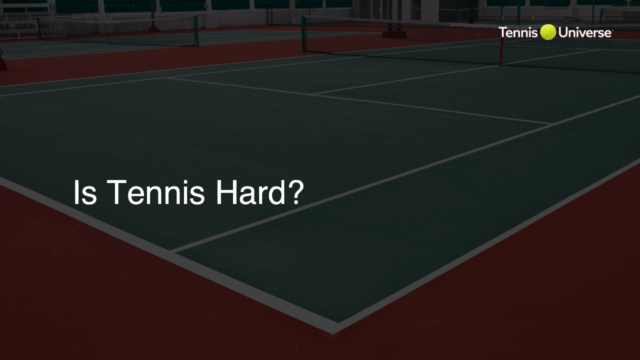A let in tennis refers to a serve that, despite making contact with the net, still lands in the correct service box. In this situation, the serve does not count as a fault, and the player is allowed to retake the serve without any penalty. This process is repeated until a legal serve or a fault occurs.
Defining a Let in Tennis
A let in tennis is a specific situation that occurs during a serve. It happens when the ball touches the net but still lands within the proper service box. This scenario warrants a neutral outcome, with the player allowed to retake the serve without incurring a fault or point loss.
Let Rules and Scenarios
Understanding the rules and different let scenarios is crucial for both beginners and experienced players. Below, we explore various common let occurrences.
1. Serve Let
As mentioned earlier, a serve let arises when the server’s tennis racket makes contact with the ball, and the ball touches the net before landing in the correct service box. In this case, the server gets another chance without penalty. However, if the ball doesn’t land in the appropriate service box after touching the net, it results in a fault instead of a let.
2. Obstruction Let
An obstruction let occurs when the ball’s trajectory is impeded by an external force, such as a stray ball or a person entering the court. It could also result from the receiver not being prepared when the serve is initiated. In such cases, play is temporarily halted, and the point is replayed without penalty.
How to Identify a Let
Identifying a let is essential for players, especially when serving. Look out for these signs:
1. Ball Touches the Net
During a serve, if the ball hits the net before landing in the correct service box, it’s a clear let. Stay alert and listen for the distinct sound that the net makes when the ball touches it.
2. Opponent’s Body Language
When an opponent isn’t prepared for a serve, their body language shows it. They may wave their hands or move away from their ready position. In such situations, it’s a good idea to pause and provide the appropriate time for your opponent to prepare, as this could result in an obstruction let.
Mistaken for Faults
It’s common for players, especially beginners, to confuse lets with faults. Make sure to understand the distinguishing factors to avoid confusion and ensure you’re playing by the rules. A let doesn’t penalize the server; it allows them to retake their serve. On the other hand, a fault is either a failed attempt to land the ball in the correct service box or when the server touches the baseline while serving, resulting in a point loss if committed twice.
Significance of a Let in Tennis Matches
While lets may seem minor, understanding their significance is essential. On one hand, they can disrupt the flow of the game, affecting the players’ rhythm and momentum. On the other hand, being aware of lets can help players use their second serves more effectively and avoid undue pressure.
Tennis Tips: Dealing with Lets
As you gain more experience on the court, you’ll come to realize that lets are a common occurrence in tennis. You can use these tennis tips to better deal with lets and ensure a smooth gameplay:
1. Stay Focused
Lets can disrupt your rhythm, making it challenging to maintain consistency. Stay focused and treat each serve as an individual opportunity, so you can maintain composure and continue your momentum.
2. Make Necessary Adjustments
Repeatedly encountering lets while serving might mean that your serves are barely clearing the net. Use this information to adjust your technique and aim higher, reducing the risk of future lets and increasing the chances of successful serves.
3. Pay Attention to Your Opponent
Monitor your opponent’s actions and body language. If they signal they’re not ready to receive a serve, ensure you pause and replay the point to avoid an obstruction let and potential confusion.
4. Know the Rules
Having a thorough understanding of the rules surrounding lets in tennis will help you avoid unnecessary disputes and play fair. This knowledge is an essential aspect of sportsmanship and contributes to an enjoyable experience for both players.
Let Calls and Line Judges
In professional tennis matches, line judges and chair umpires play a crucial role in determining and calling lets. They are responsible for monitoring serves, the position of the player’s foot during service, and external factors affecting the point. An accurate let call is crucial in maintaining the integrity of the match and ensuring that players can focus on their game.
FAQ Section: Let in Tennis
Here are some frequently asked questions and concise answers related to lets in tennis, addressing common doubts and concerns that players might have.
What if the ball touches the net and lands outside the service box?
If the ball touches the net but lands outside the service box, it is considered a fault, not a let. The server will lose the point if it’s their second fault in a row.
Is there a limit to the number of lets a server can have consecutively?
No, there is no limit to the number of consecutive lets a server can have. As long as the ball hits the net and lands in the correct service box, the server is allowed to retake their serve.
How are lets signaled in professional tennis matches?
In professional tennis matches, line judges and chair umpires are responsible for identifying and calling lets. Usually, a judge will call out “let” and signal with their arms to indicate the occurrence of a let situation.
Can a let occur in a rally after the serve?
No, lets typically apply only to serves. Once a legal serve has been made and a rally has started, the normal rules of play apply, and any ball that strikes the net and goes over is considered in play.
Can an opponent challenge a let call?
An opponent cannot challenge a let call directly, but may ask the chair umpire for clarification if they believe a mistake was made. The ultimate decision rests with the chair umpire, who has the authority to overrule line judges if necessary.











